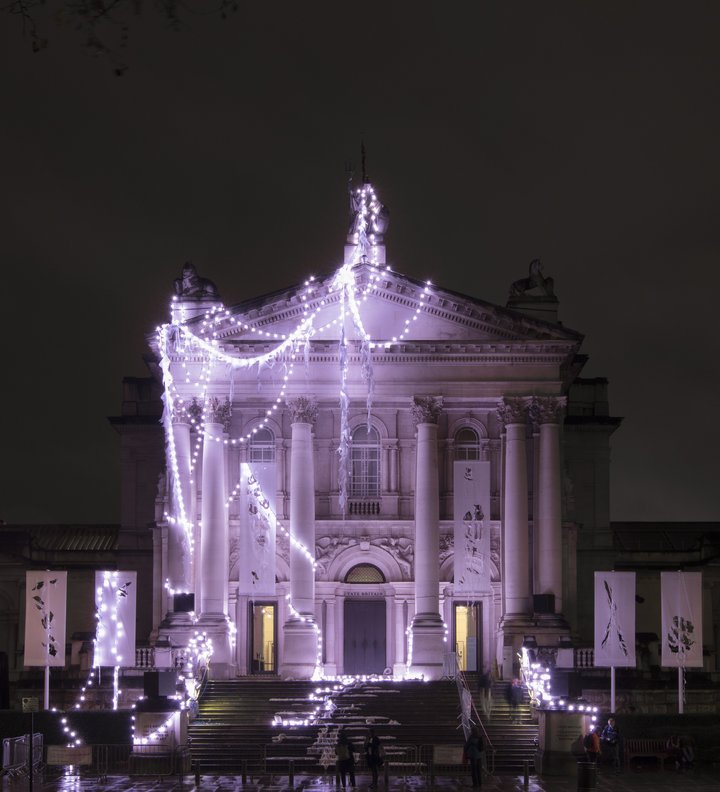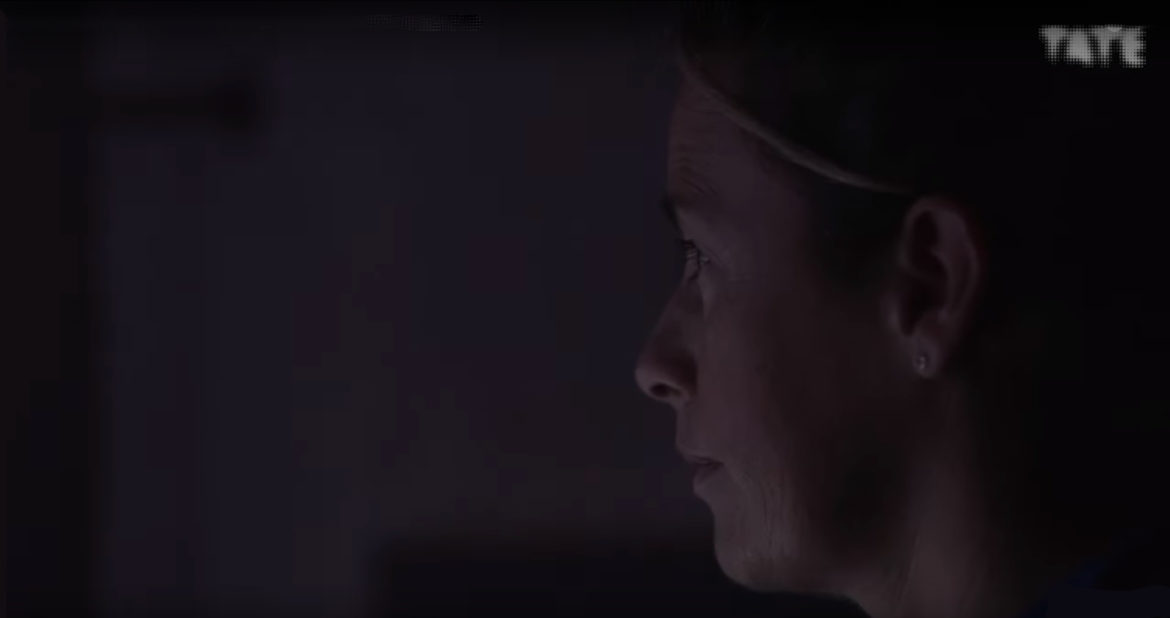 LONDON – Anne Hardy, the renowned installation artist, has drawn from the magic of the winter solstice to transform the façade of Tate Britain into life after an apocalypse. Hardy is known for her field works, which create “atmospheres” that combine light, sound, and materials.
LONDON – Anne Hardy, the renowned installation artist, has drawn from the magic of the winter solstice to transform the façade of Tate Britain into life after an apocalypse. Hardy is known for her field works, which create “atmospheres” that combine light, sound, and materials.
The title of the installation is The Depth of Darkness, The Return of the Light, which she notes is inspired by Pagan imagery and descriptions of the winter solstice.
Unveiled on November 30, Hardy’s transformation of the Tate presents a scene of an ambiguous disaster. Although what supposedly happened to the museum is not apparent, it’s clear that it was nothing good: the Tate is left overwhelmed by those events, whether they occurred at the hands of humans or of nature itself.
Visitors approaching the Millbank entrance of the museum experience a 21-minute quadrophonic soundscape of thunder crashes, the rumble of collapsing ice, and the rush of violent waters. Tropical birds and the buzz of swarming mosquitoes add to the panoply. While they are not exactly the sounds of a festive season, Hardy drew inspiration for the installation from the winter solstice. “The solstice is bang in the middle of the commission, 22 December, and all the other festivals come from the solstice,” she said.
Hardy notes in her conversations on Tate Shots that she constructs environments that envelope the audience; she also notes that she insists on touching each aspect of the installation herself.

The Depth of Darkness, The Return of the Light, Anne Hardy, Winter Commission [Courtesy: Tate Britain]
Hardy’s objective is to highlight the fragility of life. In her artist statement, she notes that the winter solstice is the “darkest moment of the year”. But she interprets the solstice as an aspect of a broader melody, echoing “seasonal cycles and longer-term ecological patterns, as well as alluding to contemporary social and political issues and the hope for positive change. “
The installation’s connections to Paganism do not end with the solstice imagery and the theme of returning light heralding a new cycle of life. The installation is intimately connected to the river Thames, which is honored “as a mysterious natural entity that has long been a site of ritualistic activity”.
Indeed, the soundscape recording itself is from field recordings from under and on top of the Thames within and outside of London. Hardy that “the light and sound elements of the work are site-specific and have been choreographed in situ to give the impression that the building has become possessed. Manifesting these environmental changes through the material and aural changes to the site, the commission appears to transport visitors through time and place to a parallel prehistoric world or post-apocalyptic future.”
“When researching Tate Britain’s site on the riverbank,” the artist’s statement adds, “Hardy discovered that it was once marshland, referred to in medieval times as ‘Thorney Island’, and that by 2100 it may again be submerged underwater by rising sea levels. Hardy also heard of archaeological evidence that hippos, jungle cats and mammoths once lived in central London.”

Hardy designing her installation from Tate Shots [Youtube]
“The river is truly ancient, with tides twice daily,” Hardy notes. For this installation, she used objects from along the Thames that are typically “found,” often in situ, without “purpose or use” and are free to become anything. She brought these into her exhibition. She notes that she saw London as an ocean that has “eddies and corners where things are left as the tide goes out,” representing a collective unconscious of the city from discarded pieces of itself.
Alex Farquharson, director of Tate Britain, commented how excited he to witness the transformation of the gallery’s façade. “Anne Hardy has created something that is at once fantastically imaginative and urgently topical,” he said, “reminding us not only of the changing seasons but also of the changing climate.”
Described as post-apocalyptic, Hardy’s work is a warning of dark times, both ecologically and politically, but times that will nevertheless pass. Hardy’s transformation is an invitation to reflect on the conquering of the darkness to bring a new life. But that new life may not include humans, because life once didn’t involve humans at all. Hardy notes that “the work is a proposition to think about the reality now in a different way, by manifesting other potential realities of this site that might have been in the past, or might be in the future.”
Hardy’s installation will remain at the Tate Britain through January 26, 2020. Tate Britain is open daily from 10 AM to 6 PM, and admission is free.

Ancient of Days in Europe a Prophecy by William Blake [public domain].
Editor’s note: The Tate Britain is also currently exhibiting the visual work of William Blake, who created some of the most iconic images to emerge from British painting along with a host of Pagan-centric and occult-inspired images. The Blake exhibition will continue through February 2, 2020.
The Wild Hunt is not responsible for links to external content.
To join a conversation on this post:
Visit our The Wild Hunt subreddit! Point your favorite browser to https://www.reddit.com/r/The_Wild_Hunt_News/, then click “JOIN”. Make sure to click the bell, too, to be notified of new articles posted to our subreddit.